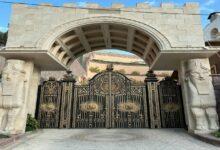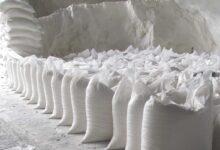Premium Iranian Limestone export
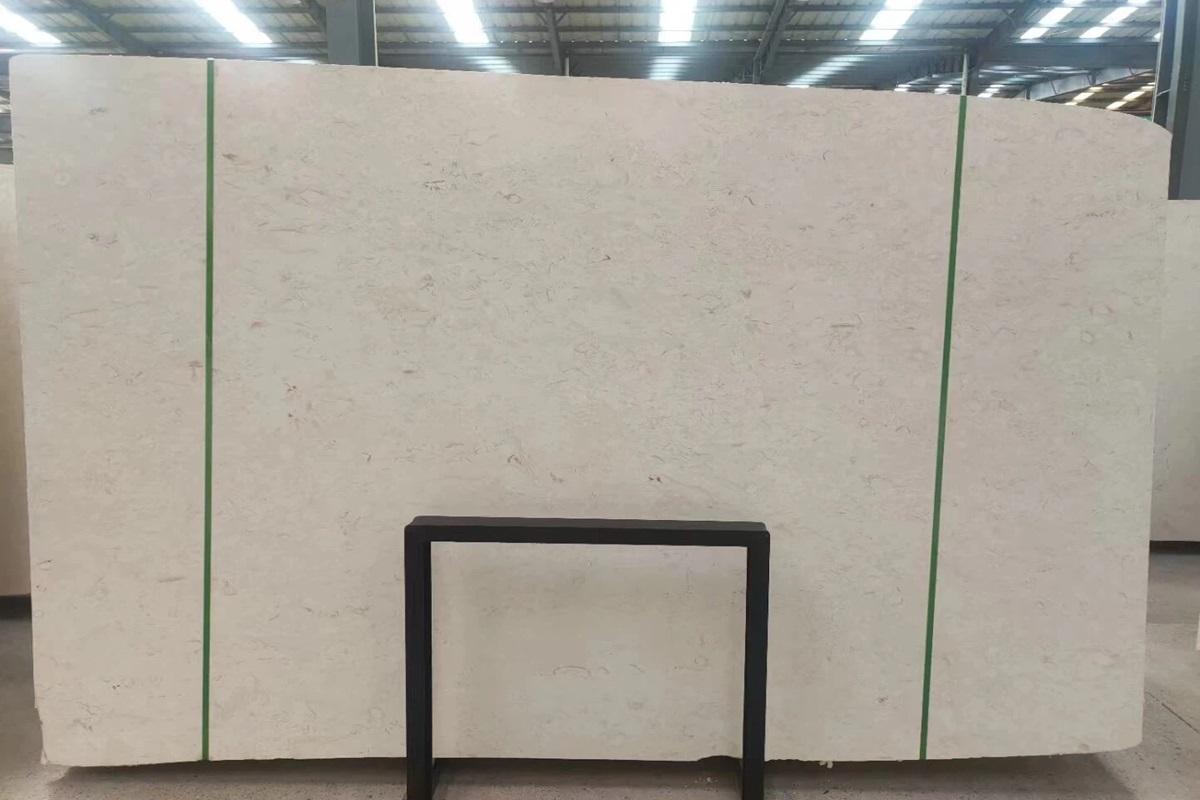
Buy premium Iranian limestone slabs, highly valued for their natural texture, warm tones, and excellent workability in both indoor and outdoor applications. Ideal for flooring, wall cladding, facades, and landscaping, these high-quality limestone slabs are quarried from rich Iranian deposits and processed to meet global standards. With their consistent color, fine grain, and durability, Iranian limestone is a top choice for architects, designers, and builders seeking elegant and long-lasting stone materials. Purchase directly from trusted suppliers in Iran and take advantage of competitive export prices. Browse our updated limestone slab price list for the best offers on top-grade stone products. Exporting limestone in Iran is one of the most valuable export activities that earns the country good foreign exchange. Some cities in Iran have rich limestone mines, so every year thousands of tons of different types of lime are exported to countries such as Iraq, Oman, Pakistan, Turkmenistan, Afghanistan, Armenia, Qatar, Kuwait, Cyprus and other countries. .
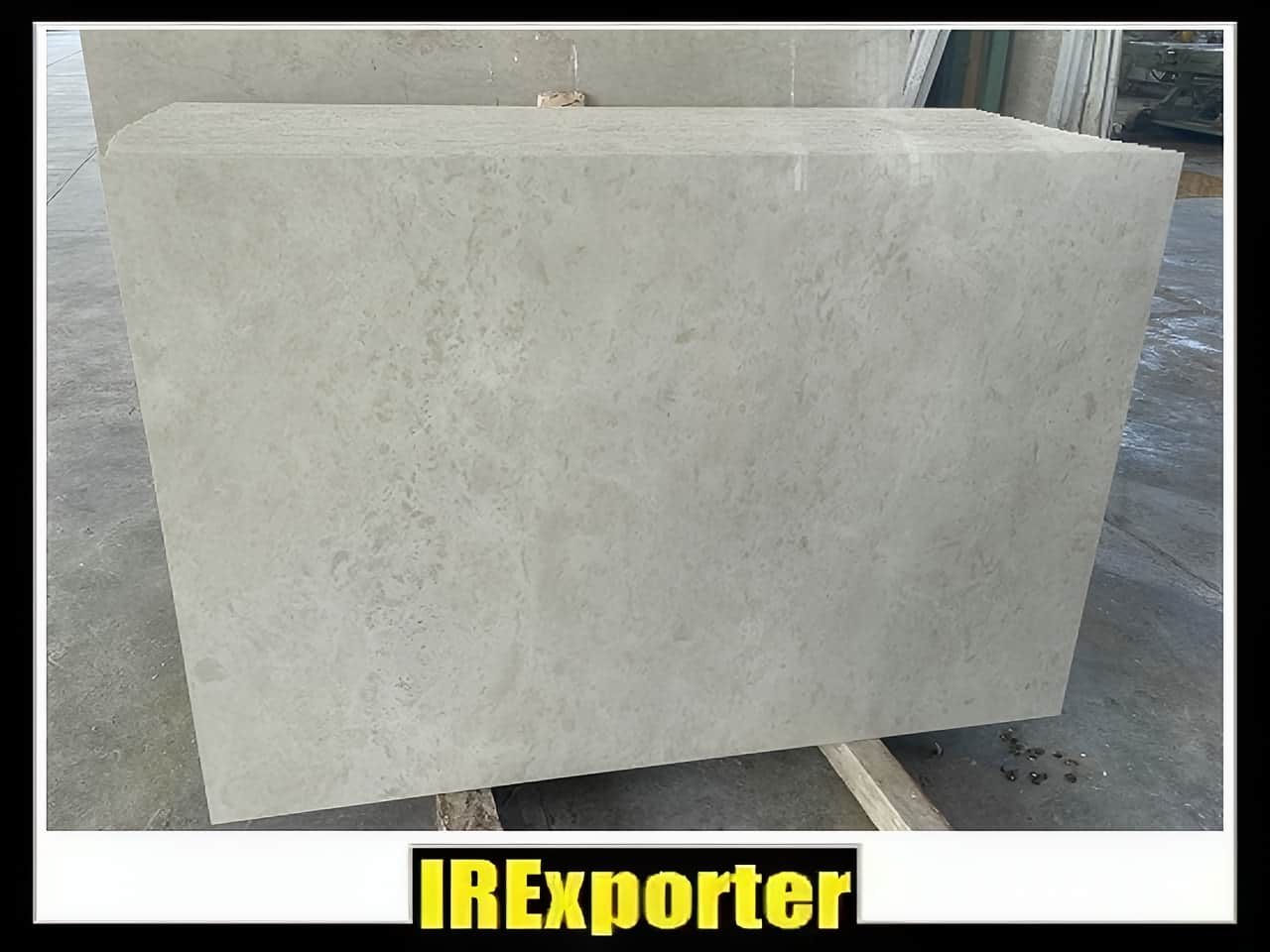
competition in the global stone market
the global stone market is highly competitive, with multiple countries producing and exporting high-quality stone products. Iran competes with countries like italy, china, and india as a major player in this market. However, iran distinguishes itself through its commitment to quality control, abundant resources, and skilled workforce, maintaining its position as a leading producer and exporter of limestone stone slabs. Limestone is usually exported in the form of quicklime, hydrated lime, powder and micronized lime. More than 70% of Iran’s mineral mines are high-purity limestone mines, so it is considered one of the best in limestone production and export. Lime is used for many purposes, so it has a potential market. Next, the properties and uses of export lime, price and export to different countries are discussed.
support for the export of limestone stone slabs from iran
iran’s government provides significant support for the export of limestone stone slabs. This includes financial incentives such as tax breaks and subsidies, as well as research and development support to enhance the stone industry.
irexporter is a leading exporter of limestone rock to various countries, offering high-quality products and reliable services. We specialize in the export of limestone rock to turkey, pakistan, uzbekistan, iraq, georgia, afghanistan, cyprus, kuwait, oman, qatar, syria, armenia, turkmenistan, russia, morocco, europe, africa, australia, new zealand, malaysia, germany, sweden, bangladesh, thailand, singapore, and cyprus.
as an established limestone rock export agency, we have a strong network and expertise in the industry. Our business group handles all aspects of limestone rock export, from transportation to sales. We provide a comprehensive guide to the specifications of export limestone rock from iran, ensuring that our customers make informed purchasing decisions.
if you’re wondering where to buy export limestone rock or what type to choose, we offer the best selection and competitive prices. Our export limestone rock sales system in iran is efficient and reliable. Whether you’re looking for the highest quality limestone rock or affordable options, we have you covered.
we facilitate online ordering through our dedicated online store, making it convenient to purchase limestone rock for export from iran. Our immediate purchase option ensures a fast and hassle-free buying process. Our knowledgeable team can guide you through the buying process and help you find the most suitable export limestone rock for your needs.
explore our photo gallery to see images of our export limestone rock collection. We continuously update our catalog with new and high-quality limestone rock varieties.
with our commitment to excellent export quality, we guarantee the quality of our limestone rock. Our after-sales service ensures customer satisfaction and support throughout the export process.
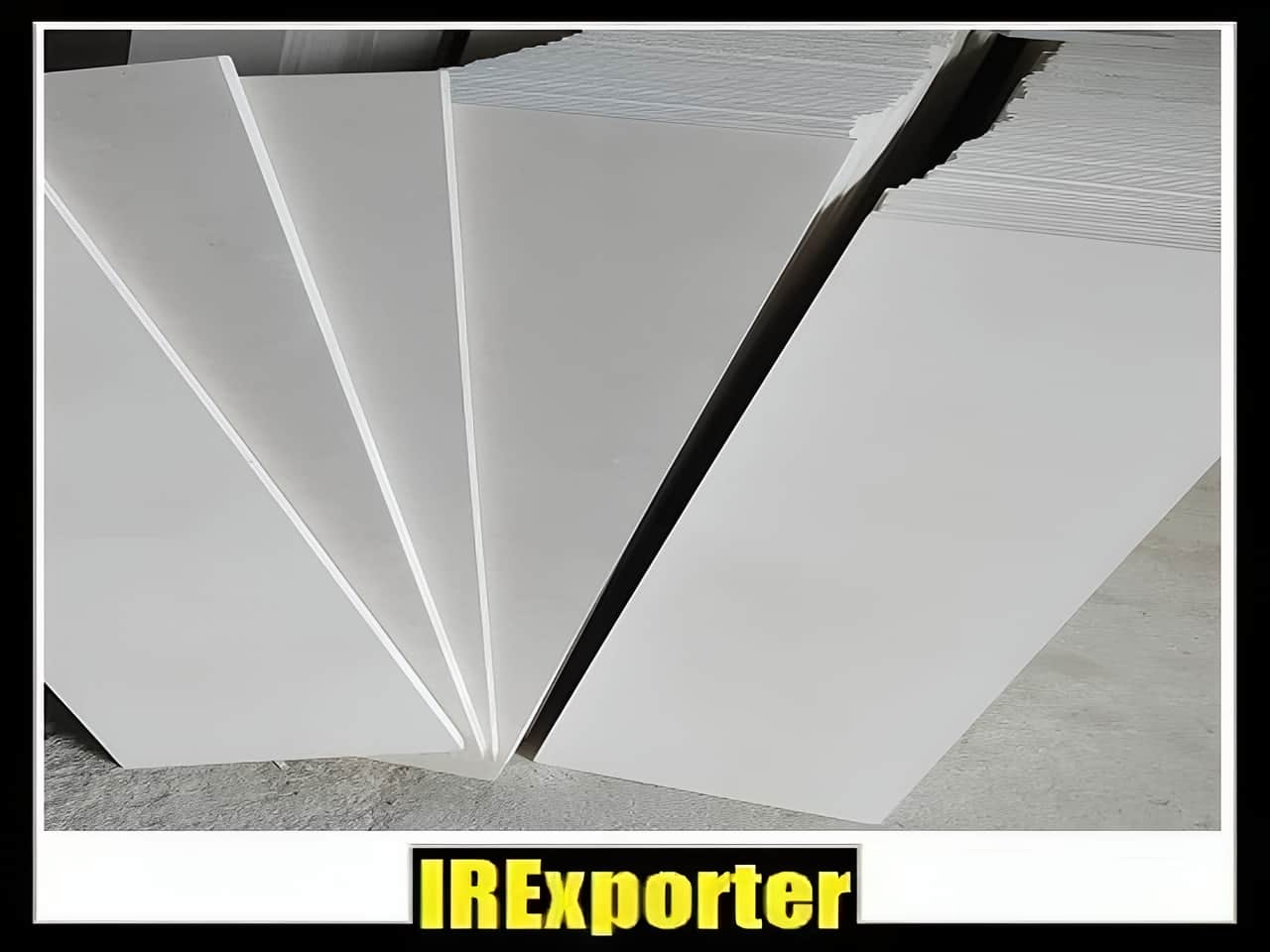
market demand for limestone stone slabs from iran
the demand for limestone stone slabs from iran has been steadily growing in recent years due to the increasing popularity of natural stone products and the demand for high-quality construction materials. Iran’s limestone slabs are particularly popular in europe, the middle east, and asia, where they are used in various construction and design projects. The combination of abundant resources and a skilled workforce has positioned iran as a major player in the global stone market.
factors affecting the purchase price of exported limestone stone slabs
the purchase price of exported limestone stone slabs is influenced by several factors, including the stone’s quality, slab size and thickness, and the employed processing and manufacturing methods. Other factors impacting the price include the availability of raw materials, transportation costs, and fluctuations in the exchange rate. Market demand also plays a role, with prices rising during high demand and falling during low demand periods.
quality control in the export of limestone stone slabs from iran
iran has stringent quality control measures to ensure the high quality of its limestone stone slabs. These measures include meticulous selection of raw materials, rigorous processing and manufacturing methods, and thorough inspection and testing. Iran’s commitment to quality control has maintained its reputation for producing high-quality stone products and ensuring customer satisfaction.
transportation and logistics for exporting limestone stone slabs from iran
the transportation and logistics involved in exporting limestone stone slabs from iran are crucial for the industry’s success. Iran boasts a well-developed transportation infrastructure, including ports, airports, and road networks, facilitating the transportation of stone products to customers worldwide. The country also has a robust logistics industry to ensure timely and secure delivery of stone products in optimal condition.
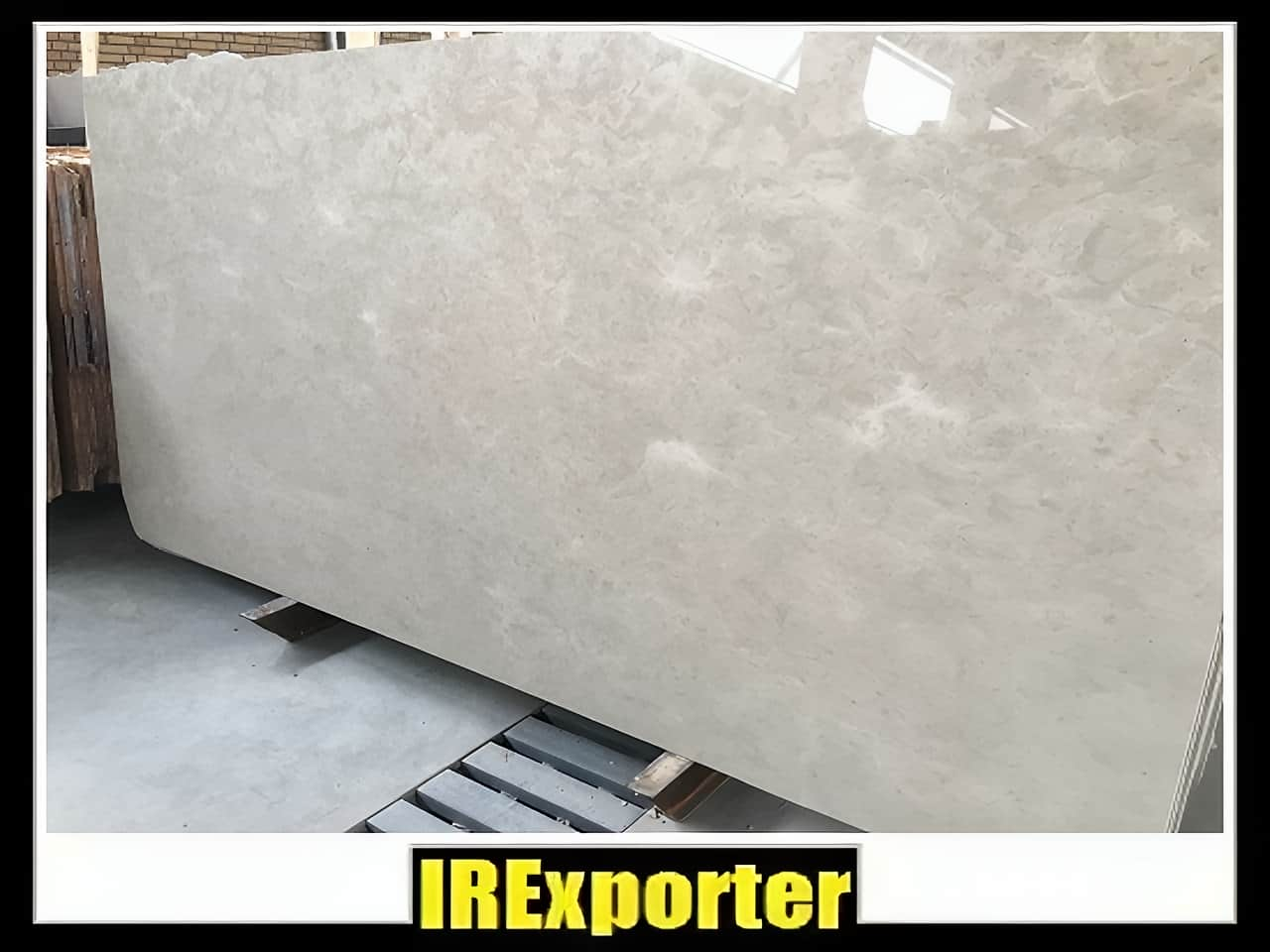
limestone exports: a valuable trade activity
exporting limestone from iran is a lucrative trade activity that contributes significantly to the country’s economy. Iran possesses abundant limestone mines in various cities, allowing for the annual export of thousands of tons of limestone to countries such as iraq, oman, pakistan, turkmenistan, afghanistan, armenia, qatar, kuwait, cyprus, and others.
limestone is produced in different forms, including quicklime, slaked lime, powder, and microlime. Iran boasts high-purity limestone deposits, making it an ideal source for limestone production and export. The versatility of lime in various industries adds to its market potential. In the following sections, we will delve into the characteristics, uses, pricing, and export destinations of limestone.
characteristics and applications of limestone
lime, a white mineral with impurities, undergoes a purification process through heating to eliminate substances like silicon, magnesium, manganese, aluminum, and more. Limestone predominantly exists in the form of clay, sand, and dolomite, with its calcium content determining its quality.
limestone finds extensive use across multiple industries. Its primary application lies in construction and civil engineering projects. Limestone is utilized in asphalt for road leveling, modification, and repair. It plays a crucial role in the production of masonry, building limestone structures (both historic and modern), various types of plaster, bricks, and cement. Its permeability, stability, and durability make it an essential component in insulation, glass production, filling operations, cosmetics, health industries, steel production, leather industry, animal husbandry, agriculture, and more.
estimating the export price of limestone
determining the export price of limestone involves considering multiple factors. Purity percentage is a critical aspect affecting the price. Additionally, factors such as the type of lime, production process, transportation, exchange rates, production volume, packaging type, quality level, and competitive pricing influence the final cost. It is important to note that prices can be volatile due to economic fluctuations.
limestone is commonly sold in bulk or bags. Various types, including hydrated lime, quicklime, dead lime, slaked lime, and micronized lime, have different prices based on their properties and production stages. To obtain the current price, it is recommended to contact the appropriate authorities and export centers and proceed accordingly.
documents required for limestone export
exporting any product requires a thorough understanding of the process and associated documentation. Adequate preparation and knowledge of export terms and conditions facilitate a smooth export process. For limestone export, the following documents are essential:
- trade license based on the import and export law
- broadcast license (if required)
- medical certificate (if necessary)
- standard certificate (if required)
- packaging format documentation
- certificate of origin
- bill of lading
- customs ledger
the limestone export process
once you have obtained the necessary and valid export certificates, it is crucial to understand and follow the export process in accordance with the law. The steps involved in limestone export include:
- obtaining orders from countries requesting limestone imports
- issuing proforma invoices
- preparing and packing the limestone for export
- determining the customs price and obtaining necessary permits
- submitting a customs declaration
- ensuring proper coverage for the transported limestone
- arranging transportation with a shipping company
- completing inspection, initialization, and invoicing procedures
specific export destinations: turkey, pakistan, uzbekistan, iraq, georgia, afghanistan, cyprus, kuwait, oman, qatar, syria, armenia, turkmenistan
each destination country has its own import requirements and regulations that must be adhered to when exporting limestone. Here are some insights into limestone exports to specific countries:
- turkey: turkey is a neighboring country with significant import demand for limestone due to its construction projects and infrastructure development.
- pakistan: with a border shared with iran, pakistan offers great opportunities for limestone exports, especially for construction purposes.
- uzbekistan: cultural similarities and economic relations make uzbekistan an attractive market for limestone exports from iran. The country’s mining industry and agricultural sector create demand for limestone.
- iraq: iraq, with its extensive reconstruction efforts, requires large quantities of limestone for construction and other industries.
- georgia: although direct limestone exports to georgia are currently limited, the cultural ties and shared civilization present opportunities for iran to enter the european market via georgia.
- afghanistan: despite recent conflicts, afghanistan remains an important export destination for limestone, particularly in the construction sector.
- cyprus: cyprus has a growing demand for construction materials, offering potential for limestone exports from iran.
- kuwait: kuwait is a neighboring country with significant demand for limestone. Exporting limestone to kuwait can be a profitable venture, especially considering its construction and infrastructure projects.
- oman: oman’s thriving economy, based on agriculture, mining, and fishing, presents opportunities for limestone exports. The country requires limestone for various industries and has a favorable trade relationship with iran.
- qatar: while not a major market for limestone, qatar’s construction projects and infrastructure development create a demand for limestone imports.
- syria: syria, as a neighboring country, has strong economic relations with iran. Exporting limestone to syria can contribute to the reconstruction efforts and supply construction materials.
- armenia: armenia, with its land border with iran and membership in the european union, offers access to the european market. Limestone exports to armenia can tap into this potential and benefit from cultural ties between the two countries.
- turkmenistan: exporting limestone to turkmenistan presents opportunities, especially in the railway exports sector. Turkmenistan’s demand for limestone and iran’s proximity make it a viable market.
iran’s limestone exports cater to various countries in the persian gulf, arab countries, europe, and beyond. With its abundant limestone resources, iran holds a competitive advantage in the export market. The affordability and quality of iranian limestone contribute to its widespread exportation.

why iranian limestone exports thrive
the demand for iranian limestone in neighboring countries is fueled by factors such as infrastructure development, reconstruction efforts, and the availability of iranian limestone compared to local supplies. Additionally, the favorable exchange rate and competitive pricing make iranian limestone attractive to importers. While some manufacturers may produce low-quality products, iran offers premium and high-quality limestone to meet the varying needs of the export market.
distinguishing limestone from marble
marble stone is the result of sedimentation and settlement of calcareous minerals over time. It undergoes a transformation into extractable sedimentary rocks with a specific thickness. This differentiation sets marble apart from limestone.
introduction to limestone stone slab export from iran
limestone stone slabs are one of iran’s most significant natural resources and are exported worldwide. Iran is rich in minerals and has a vast range of high-quality stones, including marble, granite, and limestone. These stones are used in construction, decoration, and the creation of unique products. Iran has a long history of producing and exporting high-quality limestone stone slabs, known for their exceptional quality and variety.
advantages of limestone stone slabs from iran
iran’s limestone stone slabs are renowned for their high quality and durability, making them ideal for construction and decoration projects. They are also weather-resistant, making them suitable for outdoor use. Additionally, iran offers limestone slabs in a variety of colors, textures, and patterns, catering to different design preferences. With abundant natural resources and modern processing and manufacturing methods, iran produces sought-after limestone slabs that attract customers worldwide.
| Heading | Content |
|---|---|
| Premium Quality Limestone Slabs | Are you looking to purchase top-notch Iranian natural limestone slabs? Look no further! Our company is renowned for supplying and exporting premium quality limestone slabs. We source our limestone from the finest quarries in Iran, ensuring that our customers receive products of exceptional quality. Our slabs are meticulously crafted to meet the highest industry standards and offer unparalleled beauty and durability for various applications. |
| Extensive Range of Options | We understand that every project has unique requirements, which is why we offer an extensive range of limestone slabs to choose from. Whether you need slabs for flooring, wall cladding, countertops, or any other application, we have the perfect solution for you. Our collection includes a variety of sizes, colors, and finishes, allowing you to find the ideal limestone slabs that suit your aesthetic preferences and project specifications. |
| Competitive Pricing | At our company, we strive to provide the best value to our customers. While we offer premium quality limestone slabs, our pricing remains highly competitive. We understand the importance of budget considerations for projects, and we aim to offer cost-effective solutions without compromising on quality. Contact us today to inquire about our pricing and request a quote for your specific requirements. |
| Efficient Shipping and Delivery | We have a well-established logistics network that enables us to efficiently ship and deliver limestone slabs to customers worldwide. We take great care in packaging our products to ensure they reach their destination in pristine condition. Whether you need a small quantity or a large order, we are equipped to handle your shipment with professionalism and ensure timely delivery to your desired location. |
| Reliable Customer Service | Customer satisfaction is our top priority, and we pride ourselves on delivering exceptional service. Our team of knowledgeable professionals is dedicated to assisting you throughout the purchase process. We are available to answer any questions, provide guidance, and offer personalized recommendations based on your specific project requirements. Your satisfaction is our guarantee. |
| Trusted Exporter Reputation | As a leading supplier and exporter of Iranian natural limestone slabs, we have built a strong reputation for our reliability and integrity. Our company has successfully served numerous clients worldwide, earning their trust and becoming their preferred choice for limestone slab procurement. When you choose us as your supplier, you can have confidence in receiving top-quality products, competitive pricing, and a seamless export experience. |
Frequently Asked Questions
-
What quality can I expect from your limestone slabs?
Our limestone slabs are of premium quality, sourced from the finest quarries in Iran. We meticulously select and craft our slabs to meet the highest industry standards, ensuring exceptional durability and beauty for various applications.
-
Do you offer different sizes and finishes?
Yes, we provide an extensive range of options. Our collection includes a variety of sizes, colors, and finishes to cater to diverse project requirements. Whether you need slabs for flooring, wall cladding, or countertops, we have the perfect solution for you.
-
Can you provide a quote for my project?
Certainly! We offer competitive pricing for our limestone slabs. Please contact us with your specific project details, and our team will be happy to provide you with a personalized quote.
-
How efficient is your shipping and delivery?
We have a well-established logistics network that ensures efficient shipping and delivery worldwide. Our products are carefully packaged to maintain their pristine condition during transit. We strive to provide timely delivery to your desired location.
-
What level of customer service can I expect?
We take pride in delivering reliable customer service. Our knowledgeable professionals are available to assist you throughout the purchase process. We are dedicated to answering your questions, providing guidance, and offering personalized recommendations to ensure your satisfaction.
-
How trustworthy is your company as an exporter?
We have a trusted reputation as a leading exporter of Iranian natural limestone slabs. Our company has served numerous clients worldwide, earning their trust and becoming their preferred choice. When you choose us as your supplier, you can have confidence in receiving top-quality products and a seamless export experience.
| Limestone export from Iran | |
|---|---|
| 💎 Product benefits | Good price and High quality |
| 💲 Export Limestone price | The lowest price in the trade market |
| ⏳ Quality of Limestone for export | Top-Grade |
| ⏱ How to send products | By ship shipping |
| 🎯 How to order | By email and call |
